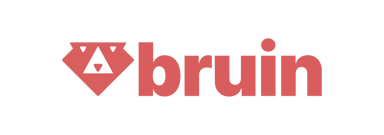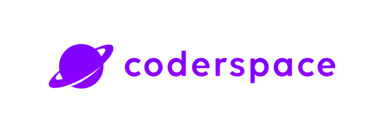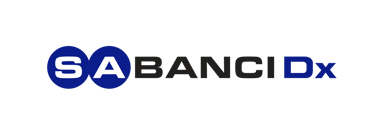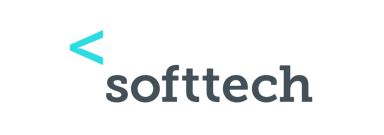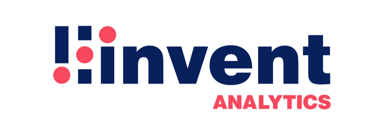Employee Engagement
Employee engagement is a critical concept in today's competitive workplace. It's more than just job satisfaction; it's about fostering a work environment where employees feel invested, motivated, and connected to their work, colleagues, and the organization's goals.
Employee Engagement Definition
Employee engagement is the emotional commitment an employee has to their organization and its goals. This commitment means engaged employees genuinely care about their work and the company, which leads to higher productivity, better customer service, and increased job satisfaction.
Levels of Employee Engagement
Understanding the different levels of employee engagement helps HR professionals tailor their strategies. Here's a breakdown👇:
- Disengaged: These employees are disconnected from their work and the company's goals. They're likely to underperform and be more susceptible to turnover.
- Moderately Engaged: These employees are satisfied with their jobs but lack the enthusiasm or drive to go above and beyond.
- Engaged: These employees are passionate about their work and feel a sense of ownership over their tasks. They're productive and contribute positively to the company's success.
- Highly Engaged: These are your top performers! They're deeply committed to the company's mission and actively seek out challenges and opportunities to grow.
Importance of Employee Engagement
Understanding the importance of employee engagement is vital for any organization aiming for success. Here's why it matters👌:
Engaged employees are demonstrably more invested in their work, leading to a multitude of benefits. They are more focused and efficient, consistently delivering higher quality work. This translates to increased productivity and performance across the organization.
Additionally, engaged employees are less likely to seek opportunities in different organizations, significantly reducing costly turnover. They are also more likely to go the extra mile for customers, resulting in enhanced customer satisfaction and loyalty.
A reputation for high employee engagement attracts top talent and strengthens your employer brand. When potential candidates see a company actively fostering a positive and engaged work environment, it becomes a magnet for highly skilled individuals.
Engaged employees feel empowered and valued, fostering a culture of innovation and creativity. By prioritizing employee engagement, organizations can unlock a wealth of benefits that contribute directly to their overall success.
Benefits of Employee Engagement
Employee engagement offers a win-win situation for both employees and the organization. Here are some key benefits for employees 🤝:
- Increased Job Satisfaction: Feeling valued and connected to the company advances greater enjoyment in their work.
- Enhanced Sense of Purpose: Understanding how their work contributes to a larger goal provides meaning and motivation.
- Improved Well-being: A positive work environment reduces stress and promotes overall well-being of employees.
- Greater Career Development Opportunities: Engaged employees are more likely to be given opportunities to learn and grow within the company.
- Improved Retention: Reduced turnover saves costs associated with hiring and training new employees.
The Role of HR in Employee Engagement
HR plays a pivotal role in fostering employee engagement. Here are some key responsibilities 📌:
Through surveys, focus groups, and exit interviews, they gain a deep understanding of employee needs. This insight allows them to develop targeted strategies for fostering recognition, open communication, and opportunities for growth.
HR creates a culture of appreciation through recognition programs, while promoting transparency and collaboration through open communication channels. They further empower employees by offering training, mentorships, and career development resources.
Recognizing the importance of work-life balance, HR advocates for flexible work arrangements and well-being programs. This multifaceted approach cultivates a thriving and engaged workforce, ultimately driving organizational success.
Employee Engagement Model Examples
Several employee engagement models can help HR professionals understand and improve employee engagement👇:
The Kahn Engagement Framework
This model focuses on three core psychological states that drive engagement: Meaningfulness, Safety, and Autonomy. When employees feel their work is meaningful, they are psychologically safe to take risks and have autonomy over their work, leading to higher engagement.
The Job Demands-Resources Model
This model posits that employee engagement thrives when there's a balance between job demands(workload, pressure) and job resources (support, tools, training). When demands outweigh resources, employees become disengaged.
Maslow's Hierarchy of Needs
This classic model suggests that individuals have a hierarchy of needs, starting with basic physiological needs like food and shelter, progressing to safety and security needs, love and belonging needs, esteem needs (recognition and respect), and finally, self-actualization needs (personal growth and fulfillment).
The Gallup Q12 Model
This widely used model identifies 12 key elements that predict employee engagement and performance. These elements focus on aspects like knowing what's expected at work, having the materials and equipment needed, feeling valued for their contributions, and having opportunities for growth and development.
The Aon Hewitt Engagement Model
This model proposes that engaged employees will do three things: Say (positive things about the organization), Stay (intend to remain with the organization), and Strive (work to the best of their ability and put in discretionary effort). The model focuses on factors like leadership effectiveness, performance management practices, career development opportunities, and rewards and recognition programs.
The Zinger Model
Developed by Zenger Folkman, this model focuses on six key drivers of employee engagement: Purpose, Hope, Efficacy, Mastery, Camaraderie, and Recognition. By fostering these elements within the workplace, organizations can create a more engaged and productive workforce.
Employee Engagement Best Practices
Here are some best practices to cultivate a highly engaged workforce 📌:
Clearly communicate company vision and mission. Make sure that employees understand the company's goals and how their individual roles contribute to the bigger picture.
Invest in onboarding and development programs. Provide new hires with a smooth onboarding experience and ongoing opportunities for learning and development.
Empower employees. Give them ownership over their work and decision-making authority within reasonable boundaries.
Celebrate diversity and inclusion. Create a workplace where everyone feels valued and respected, regardless of background or beliefs.
Promote work-life balance. Offer flexible work arrangements, generous leave policies, and programs that support employee well-being.
Recognize and reward achievements. Celebrate individual and team successes through meaningful recognition programs.
Encourage open communication! Create a safe space for employees to voice their concerns and ideas. Regularly solicit feedback through surveys, focus groups, and one-on-one meetings.
How to Measure Employee Engagement
Measuring employee engagement helps HR professionals assess the effectiveness of their strategies and identify areas for improvement. Here are some common methods:
Employee Engagement Surveys
Regularly conduct anonymous surveys to gauge employee sentiment about various aspects of their work experience.
Focus Groups and One-on-One Meetings
Gather qualitative data through group discussions and individual meetings to understand employee concerns and feedback in more depth.
Tracking Key Performance Indicators (KPIs)
Monitor and analyze metrics like retention rates, absenteeism, and productivity to indirectly measure employee engagement.
Tools for Effective Employee Engagement
Several tools and resources can assist HR professionals in their employee engagement efforts:
- Employee Engagement Software: Many software platforms offer tools for conducting surveys, managing recognition programs, and tracking employee sentiment.
- Performance Management Systems: Use performance management systems to set clear goals, track progress, and provide ongoing feedback to keep employees engaged.
- Internal Communication Platforms: Utilize platforms like intranets or team communication tools to keep employees informed and create a space for two-way communication, such as Slack or Microsoft Teams.
- Applicant Tracking Systems (ATS): An ATS is a software designed to streamline the entire recruitment process, from initial candidate application to onboarding. Hirex offers a strong platform that automates many administrative tasks associated with recruitment, saving HR valuable time. The time saved through automation with Hirex allows HR teams to shift their focus to activities that directly impact employee engagement. They can invest more time in building relationships with potential hires, fostering a positive candidate experience, and ensuring a smooth onboarding process.
Employee Engagement Action Plan
Developing a comprehensive employee engagement action plan is crucial. Here's how 📌:
- Conduct an Engagement Assessment: Use surveys, focus groups, and exit interviews to understand your current engagement levels and identify areas for improvement.
- Set SMART Goals: Establish specific, measurable, achievable, relevant, and time-bound goals for your employee engagement initiatives.
- Develop Actionable Strategies: Based on your assessment and goals, create a plan with specific actions, timelines, and assigned responsibilities.
- Implement and Monitor Progress: Put your plan into action, track your progress, and make necessary adjustments as you go.
- Communicate and Celebrate Successes: Keep employees informed about your engagement efforts and celebrate successes together to maintain momentum.
Effective Employee Engagement Ideas
To spark creativity and boost morale, consider implementing a variety of employee engagement initiatives.
Team-building activities, from volunteering projects to escape room challenges, can create a sense of collaboration and strengthen relationships.
Offering flexible working hours empowers employees to achieve a healthy work-life balance, reducing stress and promoting well-being.
Investing in wellness programs, such as on-site fitness classes or healthy meal options, demonstrates a commitment to employee health.
Implementing employee recognition programs that celebrate achievements, both big and small, fosters a sense of value and motivates employees to strive for excellence.
These creative strategies can significantly enhance employee engagement and contribute to a more positive and productive work environment. ⭐️
Employee Engagement and Retention
Employee engagement and retention are strongly linked. A highly engaged workforce is less likely to leave for other opportunities. Here's how to leverage engagement to boost retention 👌:
- Invest in Your People: Demonstrate your commitment to employee growth and development through training programs, career development opportunities, and tuition reimbursement programs.
- Promote a Positive Work Environment: Foster a culture of respect, appreciation, and psychological safety where employees feel valued and comfortable bringing their whole selves to work.
- Offer Competitive Compensation and Benefits: Ensure your compensation packages and benefits are competitive within your industry to attract and retain top talent.
- Provide Opportunities for Recognition and Advancement: Recognize and reward employee achievements to show appreciation and motivate them.
- Regularly Conduct Stay Interviews: Proactively engage with employees to understand their needs, concerns, and career aspirations to address any potential issues.
Employee engagement is a critical factor in the success of any organization. By understanding its importance, measuring it effectively, and implementing best practices, HR professionals can significantly enhance engagement levels. This leads to a more productive, satisfied, and loyal workforce, ultimately driving the organization towards greater success. ⭐️
Contents
Get a demo
- Quickly find top candidates with smart application management
- Improve team collaboration using built-in communication and workflows
- Offer a smooth candidate experience to strengthen your employer brand
- Count on 24/7 support for a hassle-free hiring process
- Quickly find top candidates with smart application management
- Improve team collaboration using built-in communication and workflows
- Offer a smooth candidate experience to strengthen your employer brand
- Count on 24/7 support for a hassle-free hiring process
"We truly felt the speed difference. Everything was smoother, and candidate feedback was much more positive. It made our jobs easier."

Trusted by 100+ teams
Get Informed,F.A.Q.
Revolutionize your hiring process with our transformative Applicant Tracking System (ATS.)
Suggested keywords
What is Cultural Fit?
Let's talk numbers - 89% of employers put cultural fit at the top of their hiring checklist. Pretty huge. But wait a second... what exactly does cultural fit mean in today's fast-moving workplace?The ...
Employee NPS Benchmarks
An Employee NPS benchmark is basically a way to see how your company’s employee satisfaction stacks up against others. It helps turn your eNPS score into something useful by giving it context. 📌You'r...
Salary Benchmarking
Salary benchmarking is basically figuring out if what you're paying your team makes sense compared to what others are offering for similar roles. It’s like checking the going rate before you buy somet...

